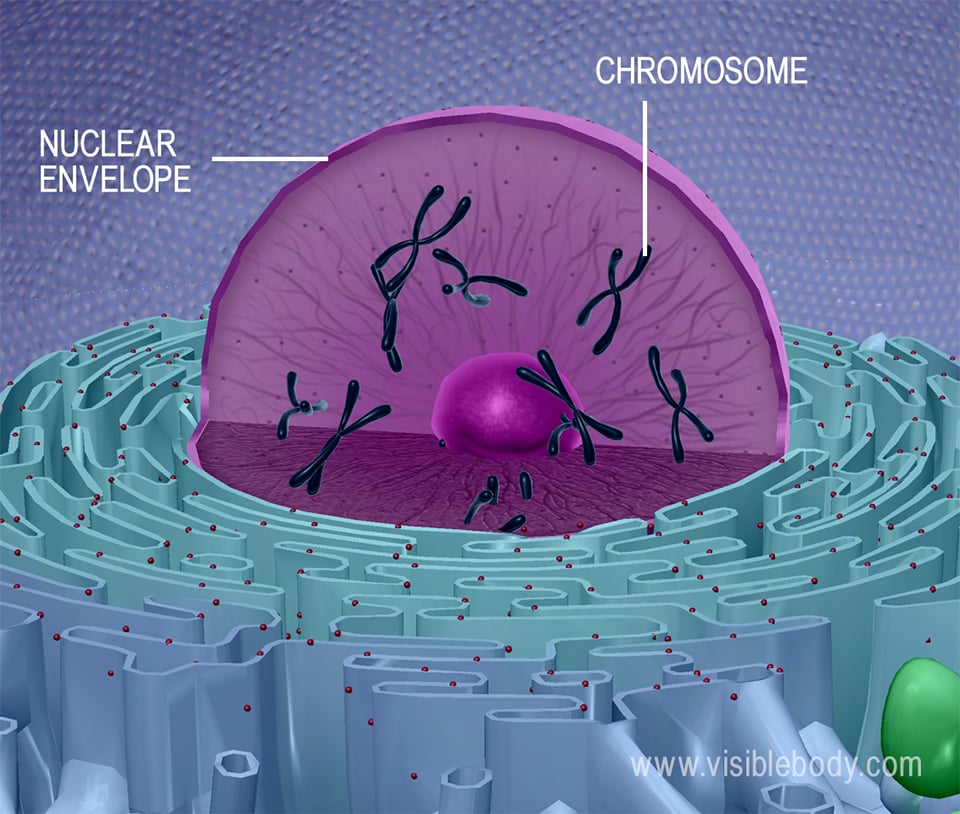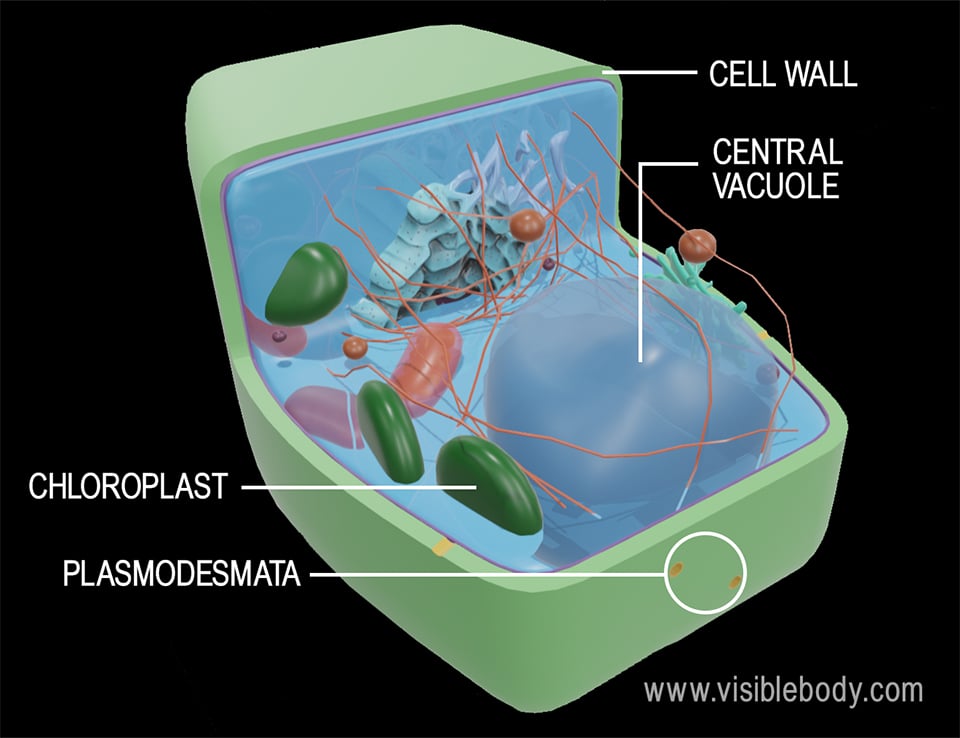Eukaryotic cells are found in plants, animals, fungi, and protists. They generally have a nucleus—an organelle surrounded by a membrane called the nuclear envelope—where DNA is stored. There are a few exceptions to this generalization, such as human red blood cells, which don’t have a nucleus when mature. Eukaryotic cells are typically larger than prokaryotic cells, ranging from around 10 to 100 μm in diameter. While many eukaryotes consist of multiple cells, there are also single-celled eukaryotes.
Like bacteria, animal cells have a plasma membrane, cytoplasm, and DNA. However, you’ll notice that the inside and outside of animal cells looks quite different from that of bacteria. For one, animal cells don’t have a cell wall. Instead, they have a cytoskeleton, a network of filaments composed of proteins. The cytoskeleton provides support and internal transport for the cell.
In addition, most animal cells have a nucleus, a special organelle that stores DNA. The DNA inside the nucleus is usually organized into strings called chromosomes.

The cytoplasm of animal cells is filled with a variety of organelles that help the cells survive and reproduce. Here are some key cytoplasm-dwelling organelles and their functions:
|
Organelle |
Function |
|
Centrosome |
The centrioles and pericentriolar material inside play a role in cell division and building microtubules |
|
Golgi apparatus |
Modifies, sorts and packs proteins into transfer vesicles, so they can go elsewhere in the cell or be secreted |
|
Lysosomes & peroxisomes |
Help remove waste, break down toxic compounds, and recycle cell structures |
|
Mitochondria |
Generate energy |
|
Ribosomes |
Synthesize proteins |
|
Rough endoplasmic reticulum |
Continuous with outer layer of nuclear envelope and has ribosomes embedded on the outer membrane; helps transport materials within the cell; segregates newly-made proteins for transport by vesicles |
|
Smooth endoplasmic reticulum |
Separate from the nuclear membrane, but continuous with the rough endoplasmic reticulum, and does not contain ribosomes; site of lipid synthesis, carbohydrate metabolism and detoxification; helps transport materials within the cell |
|
Vesicles |
Small membranous sacs that transport materials within the cell; can fuse with the cell membrane to release contents |
Like animal cells and other eukaryotic cells, plant cells have a nucleus that stores their DNA. However, plant cells differ from animal cells in several important ways. First, unlike animal cells, plant cells have a cell wall, which is very different from prokaryotic cell walls. Plant cell walls have channels called plasmodesmata (sg. plasmodesma) that allow cells to communicate by passing sugars, ions, and even proteins and RNA from one cell to another.
Animal and plant cells both have mitochondria. Mitochondria use glucose and oxygen to carry out cellular respiration and create ATP, a molecule that powers processes throughout the cell. In addition to mitochondria, plant cells also have special structures called chloroplasts that are essential to the process of photosynthesis. In this process, plants use light, water, and carbon dioxide to produce glucose, which can later be broken down by cellular respiration.
Did you know that mitochondria and chloroplasts have their own DNA, separate and distinct from the DNA in the nucleus?
Another structure that is present in plant cells, but not in animal cells, is the central vacuole. In plant cells, central vacuoles are used to maintain turgor pressure by keeping the large vacuole filled with water to support the cell.

Here are the structures that are unique to animal cells, contrasted with the ones that are unique to plant cells:
|
In Animal Cells Only |
In Plant Cells Only |
| Centrosomes Centrioles |
Cell wall Central vacuole Chloroplasts Plasmodesma |
An article about plasmodesmata from the Journal of Cell Science.
A definition of a vacuole from the National Human Genome Research Institute.
When you select "Subscribe" you will start receiving our email newsletter. Use the links at the bottom of any email to manage the type of emails you receive or to unsubscribe. See our privacy policy for additional details.